Well, to be fair, there are really MORE than three important skills needed for reading. But these three really do build a solid foundation for early {or emerging} readers. As a matter of fact, many of the struggling readers I’ve worked with {we’re talking 2nd-5th graders} struggle with one or more of these important reading skills.
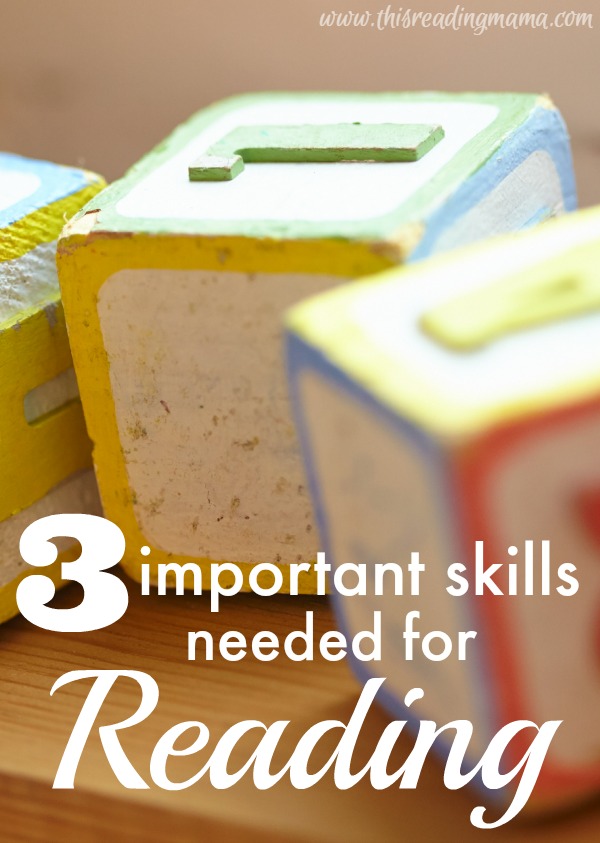
*This post contains affiliate links.
The 3 Important Skills Needed for Reading
1- rhyming words
2- syllables
3- phonemes
Now, what exactly do we want kids to do with rhyming words, syllables and phonemes {what are phonemes, any way?}.
That’s what this 7-day series is all about! You’ll find practical definitions, hands-on activities, and FREE printables for these three important reading skills. {All links to this series can be found at the end of this post.}
Rhyming Words
Rhyming words are words like rat and cat or even head and red. Rhyming words are words that have ending sounds that are similar. While there is such a thing as imperfect rhymes {words like home and bone, found in the song, “This Old Man”}, I like to focus more on the rhymes that end the same, like house/mouse or dog/frog. Rhyming words are not always spelled the same; they just need to sound the same. Here are some things we want kids to be able to do with rhyming words:
- Recognize when words rhyme and when they don’t
- Produce rhyming words {You ask: “What rhymes with cat?” and they answer, “Rat.”}
- Play with rhyming words. Create a bunch of words that rhyme with the word, even silly ones.
Playing with rhyming words, especially for young children, can be as simple as integrating easy songs into your routine or playing with nursery rhymes.
Syllables
Syllables are the “big parts” in words. For example, words like cat or fish only have one syllable. Words like happy and table have two syllables. For those who find it tricky to hear syllables, I tell people to put their hand under their chin and count the times they “drop” their chin when they say a word. Generally, this is the number of syllables the word has. Here are some things we want kids to be able to do with syllables:
- Count the number of syllables in a word
- Combine syllables to form a word. Example: “What word do you get when you put together the two parts, hap {pause here} py?”
- Say the parts of a word when a syllable is dropped. For example, “What does it sound like when you say rainbow without the rain part?“
You can use every day objects, like LEGO DUPLO bricks to count syllables like we did in this post. We’ll explore more about syllables on day 3.
Phonemes
This is where I usually lose people. Phonemes. It sounds so teacher-y, doesn’t it? So, what exactly are phonemes? Phonemes are the individual sounds in words. For example, the simple word cat has three phonemes {or individual sounds} /k/ – /a/ – /t/.
What makes this one a little tricky, especially for adults trying to teach phonemes, is that some words have more letters than phonemes. Take the word light, for example. While it has 5 letters, it only has three phonemes {or individual sounds}: /l/ – /i/ – /t/. We will explore more about phonemes on days 4-6 of this series. But for now, let’s see what we want kids to be able to do with phonemes:
- Isolate phonemes, such as “What’s the first sound you hear in the word bear?”
- Blend phonemes. For example, “I’m going to say the sounds in a word very slowly. See if you can listen to what I say and tell me what word it is: /m/-/ee/.” {me}
- Separate phonemes. For example, “How many little sounds do you hear in the word bug?” {3}
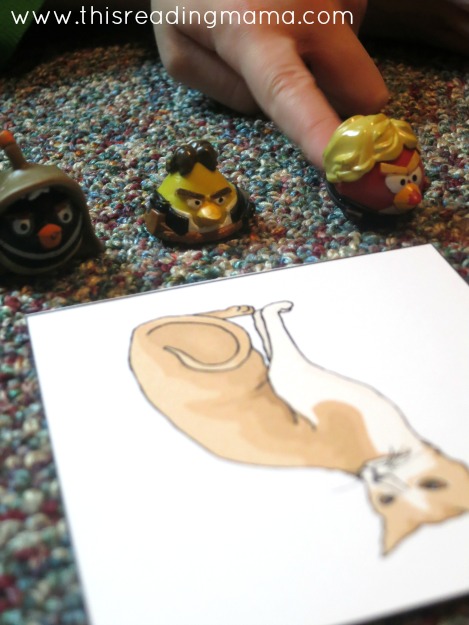 Counting phonemes is a more advanced skill that typically comes AFTER kids have mastered rhyming and syllables. Many children will also be reading easy texts, like those found in Reading the Alphabet, before they have mastered counting and manipulating phonemes.
Counting phonemes is a more advanced skill that typically comes AFTER kids have mastered rhyming and syllables. Many children will also be reading easy texts, like those found in Reading the Alphabet, before they have mastered counting and manipulating phonemes.
Phonological & Phonemic Awareness
Now the teacher terms used for all these activities is: Phonological Awareness and Phonemic Awareness.
Phonological Awareness is a broad term. It refers to the awareness of sounds in a word. A child with phonological awareness can identify and create rhyming words, count syllables in a word, or (on the smallest level) identify and manipulate individual sounds in a word.
Phonemic Awareness fits under the umbrella of phonological awareness. It is an awareness of the smallest units of sound (or phonemes) in a word. For example, a child with phonemic awareness could hear that the word bat has the sounds: /b/ /a/ /t/. A child with keen phonemic awareness could change /h/ at the beginning of hat to /c/ and know that now, it’s the word cat.
Phonological and phonemic awareness activities are things your child can do with their eyes shut. They only need their ear as they identify and manipulate sounds within words. The visual letters are not needed. {By the way, when you add letters to the mix, it’s now called “phonics”.}
The Two Best Predictors in Learning to Read
Why are phonological and phonemic awareness important? Because they are two best predictors of success in learning to read! According to Share, et. al in Sources of Individual Differences in Reading Acquisition from The Journal of Educational Psychology, they are phonemic awareness and knows letter names.
Studies over many years have shown that children who possess high levels of phonemic awareness before beginning to read do better at reading than children with low levels of this skill. Phonemic awareness has been shown to be a more potent predictor of reading success than intelligence, vocabulary, or listening comprehension.
–Learning to Read: Beyond Phonics and Whole Language by Thompson & Thompson
So, now that we know what phonological and phonemic awareness are and that they are the building blocks of reading, I want to spend a few days putting some “meat on the bones”, if you please. What things can we do to model them? What kinds of texts and activities foster phonemic awareness?
More Links in the 7 Days of Phonological and Phonemic Awareness:
- Playing with Rhyming Words
- Playing with Syllables
- Playing with Sounds in Words (Part 1 – Phoneme Isolation)
- Playing with Sounds in Words (Part 2- Phoneme Blending)
- Playing with Sounds in Words (Part 3- Phoneme Segmentation)
- Why Nursery Rhymes are Important
Find ALL our Reading Readiness printables.
Enjoy teaching!
~Becky
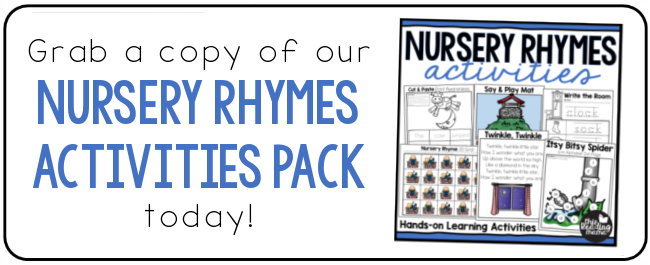
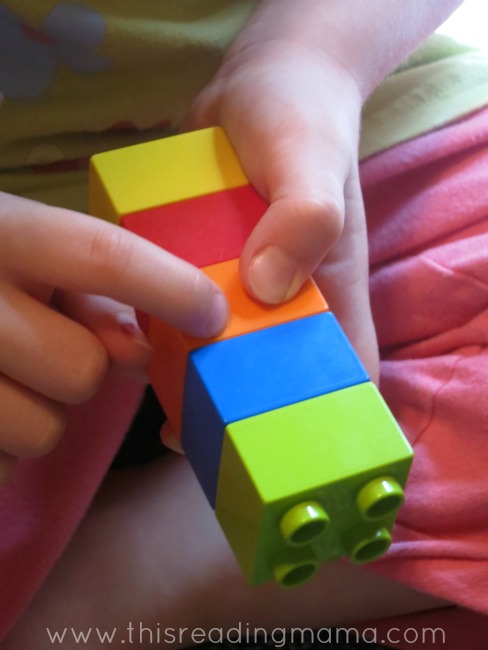
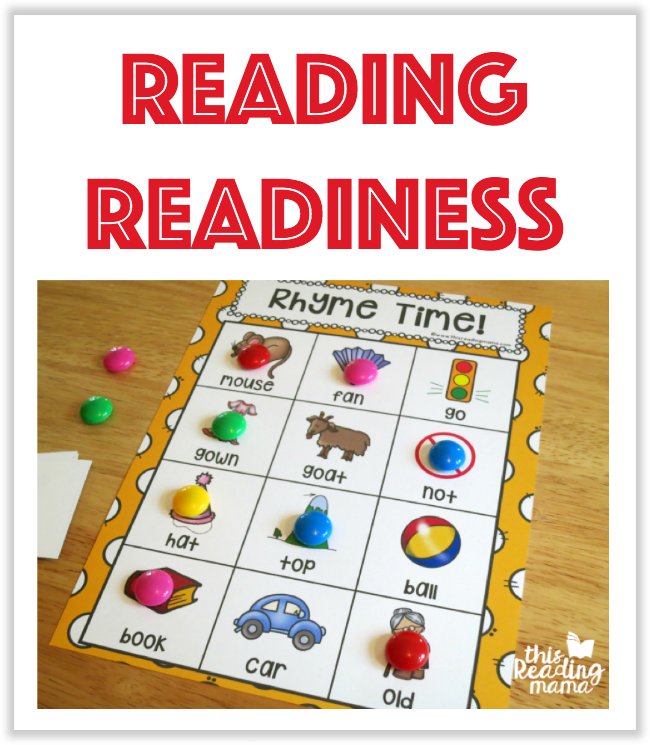
I look forward to your posts. I’m a huge phonological awareness and phonemic awareness fan! These ARE very important skills.
Thanks, Michelle. I’d love for you to share some of your links in your comments. I did use a few of your links, but the idea of linking up every day sent me over the edge…:)
WOW! This looks amazing Becky! So much great information in one post! I can’t wait to see what you write next!
Annie
Thanks, Annie! I started out with just one post, but very quickly realized I needed at least 6 posts to say what I wanted to say. Who knows, there may be more than 6!!
Hello Becky,thank you for putting such a wonderful post, this is what i needed.you have made it so easy to understand to try it out(since english is not my first language i don’t even know these concepts).Your blogs are helping me in understanding these concepts better.Thanks a lot.
What do you recommend doing first the 7 days of reading or reading the alphabet? If I bought the extended lesson pack does that cover the 7 days of reading? What is the difference?
Reading the Alphabet includes most of what you see in the 7 days of reading post. I hope that helps.
Hi Becky! I love your blog. Your posts are always informative and very easy to understand. I would like to know when do you start teaching children all the reading skills you mentioned? Is there a right age and do we do the skills in the order you mentioned? Like start from rhyming and move to syllables and then phonemes? Or start all three together ? Please help me understand the process. I would be grateful.
Thanks once again for all the wonderful tips !
Neha Chopra
http://www.spoonfulsofkindergarten.blogspot.com
Great questions! You can start first by modeling the reading skills. I think rhyming is the easiest to start with. And you can do this through reading rhyming books and singing songs. Keep it playful. You are “training” your child’s ear from the very get-go. And yes, I suggest teaching rhyming first, syllables, then working into phonemes, although syllables and BEGINNING sounds {phonemes} come about the same time. The other parts of phonemes are much harder skills so it’s best to start with the larger chunks of sound, like rhyming. Hope that helps! 🙂
Thanks a lot Becky for all your help . It did bring in more clarity. Just wanted to know whether I can start with these skills ( rhyming and syllables) as early as 3.5 years? Or wait till the child turns 4.
Will appreciate your help !
Neha
Great article, I’m teaching my 5yr old to read, so I’m researching different things that may help me in the journey, thanks for posting, in addition, the CD One Little Sound by Hap Palmer covers all 3 skills in a really fun way, my kids love it and it sticks!
Oh my! Love Hap Palmer, but I’ve never heard of that CD. I’ll have to look into it! Thanks for sharing.
Thank you so much for this post. I have two grandchildren who are struggling readers. Great information explained clearly. Wonderful foundation and steps to build on. Looking forward to reading the whole series.
Thank you,
Enola
I love all your posts and share the information and strategies with my families. I don’t know if anyone has pointed out but under Syllables you give the strategy about dropping your chin. You actually have “drop” their child LOL I know it was not meant to say drop your child. Thanks for making me smile this morning. Again I love everything you share.
Tamekia from Las Vegas NV
Haha! Fixed it! 🙂
Great read!! Thanks for sharing such a great blog, blog like these will surely help each and every homeschoolers in homeschooling their children in best way.
Becky !
Thank you so much for this post. I plan to work
through these important skills in the next few days.
I will message and let you know how I am doing.
Again thank you for sharing – this is a good thing !